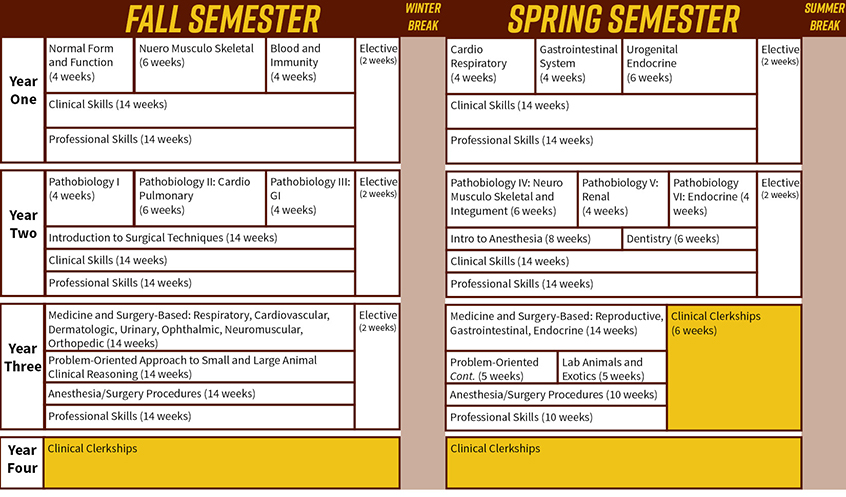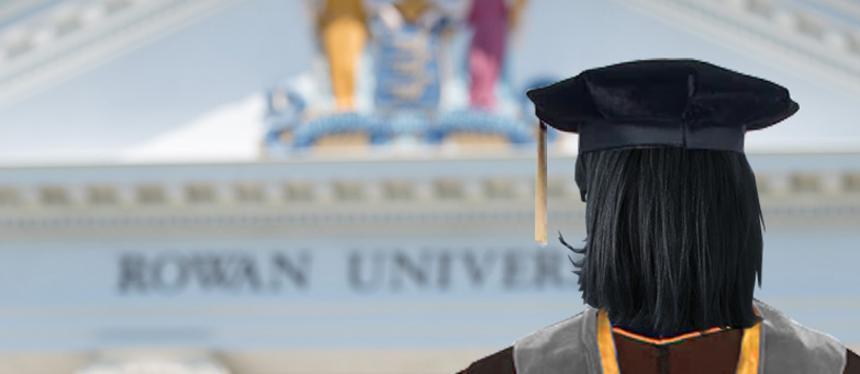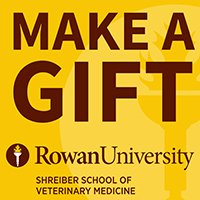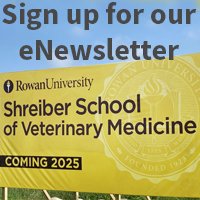Curriculum Digest
Curriculum Digest
Curriculum Digest

Clerkships
| Block | Clerkship |
| 1 | Shelter Medicine |
| 2 | Shelter Medicine |
| 3 | Primary Care: Small Animal General |
| 4 | Primary Care: Small Animal General |
| 5 | Small Animal Internal Medicine |
| 6 | Small Animal Internal Medicine |
| 7 | Small Animal Surgery |
| 8 | Small Animal Surgery |
| 9 | Emergency and Critical Care |
| 10 | Emergency and Critical Care |
| 11 | Large Animal Primary Care |
| 12 | Large Animal Primary Care |
| 13 | Large Animal Primary Care |
| 14 | Focused Large Animal Experience |
| 15 | Diagnostic Pathology/NJAHDL |
| 16 | Diagnostic Pathology/NJAHDL |
| 17 | Anesthesia |
| 18 | Beyond Private Practice |
| 19 | Specialty Medicine |
| 20 | Specialty Medicine |
| 21 | Specialty Medicine |
| 22 | Diagnostic Imaging |
| 23 | Dentistry |
| 24 | Elective |
| 25 | Elective |
| 26 | Elective |
| 27 | Elective |
| 28 | Vacation |
Courses are designed primarily in blocks around body systems. Credit hours are assigned to each block in accordance with the federal definition of “credit hour”. One hour of direct (classroom) faculty instruction and a minimum of 2 hours of laboratory instruction per week for 15 weeks or the equivalent of 15 hours of direct instruction per credit. All courses are graded pass/fail. Grading options include Pass/Fail/Incomplete/Withdrawn.
Course Number System
A three-character alphabetic Subject Code (VMED) represents the school. All courses are integrated and therefore not assigned to any department. This is followed by a 5-character alphanumeric group. The first three digits indicate the level of the course as follows:
| Course Level | Semester | Course Number Range |
| Year 1 | 1-2 | 01 510 - 599 |
| Year 2 | 3-4 | 02 610 - 699 |
| Year 3 | 5-6 | 03 710 - 799 |
| Year 4 | 7-9 | 04 801 - 899 |
| Elective Courses | N/A | 01 901 - 999 |
Semester 1
Normal Form and Function: 4 credit hours (01-510) Lecture and Laboratory
This course emphasizes core foundational knowledge of normal structure and function of domestic species. Cell structure, differentiation, and physiology are covered. Students are introduced to domestic animal body structure together with the radiographic anatomy of those structures. The course details normal behavior and management of domestic species. Students are exposed to research projects conducted by faculty within SSVM.
Neuromusculoskeletal System: 6 credit hours (01-511) Lecture and Laboratory
This course covers core knowledge of form and function of appendicular skeleton, muscles, and nerves. Cell types, cell structure and physiological mechanisms of control are emphasized. Thoracic and pelvic limb comparative anatomy is taught alongside radiographic anatomy. An overview of the central and peripheral nervous system is provided together with special senses. The brain’s role in behavior, behavioral systems, and coping in relation to welfare are discussed.
Blood and Immunity: 4 credit hours (01-512) Lecture and Laboratory
This course provides an overview of the microanatomy of red blood cells, white blood cells and platelets. Innate immunity, cellular and humoral adaptive immunity together with regulation of the immune response and hypersensitivity reactions are discussed. Mechanisms of immunity against pathogens including vaccinations are emphasized. Erythrogram, erythropoiesis, platelets, and coagulation as well as methodologies used to evaluate these structures are included.
Professional Skills I: 1 credit hour (01-513) Lecture and Laboratory
This six-semester course covers clinical and interprofessional communication, utilization of the Problem-Based Medical Record, teamwork, and collaboration, ethics, reflective practice, intercultural awareness, mindfulness and mental wellbeing, professional identity, practice management and business and personal finances. Each successive course will cover the same topics in increasing depth and complexity.
Clinical Skills I: 1 credit hour (01-515) Lecture and Laboratory
This course engages students in the application and integration of knowledge acquired across the DVM program. Using deliberate practice and feedback, the course involves development of manual dexterity, safe handling and restraint and physical exam of common domestic animals (canine, feline, equine, bovine and ovine/caprine). Students will also have immersive observational experiences in clinical practice to better understand the skills they learn within the context of clinical practice.
Semester 2
Cardiorespiratory System: 4 credit hours (01-520) Lecture and Laboratory
The structure and function of the pulmonary system together with the heart and great vessels are covered. Anatomy, microanatomy, and diagnostic imaging of the nasal mucosa, trachea, bronchial tree and lung lobes, heart and great vessels are included. Blood - Gas exchange and physiological regulation of respiration, neural and hormonal control of blood pressure, fluid distribution and homeostasis are covered.
Gastrointestinal System: 4 credit hours (01-521) Lecture and Laboratory
This course compares the structure and function of the alimentary system of domestic species including introduction of dental structures. Comparative anatomy, microanatomy, and diagnostic imaging are covered. Endocrine, paracrine, neurocrine and autocrine functions of the GI tract are discussed. Liver, together with the endocrine and exocrine pancreas are included as they relate to the consumption, digestion, metabolism, and excretion of nutrients. Common diets for each domestic species are included as well as the ability of these diets to meet the nutrient needs of animals in different life stages.
Urogenital and Endocrine Systems: 6 credit hours (01-522) Lecture and Laboratory
Renal anatomy and physiology are covered in this course. This will include glomerular filtration, excretion of toxins and reabsorption of solutes and ions. The role of the kidney in fluid distribution, acid-base balance, and regulation of blood pressure is emphasized. The structure and function of the reproductive tracts in domestic animals including the gross anatomy, microanatomy, and diagnostic imaging is presented. The role of the hypothalamic-pituitary axis in the control of reproduction, thyroid, and adrenal function is included.
Professional Skills II: 1 credit hour (01-523) Lecture and Laboratory
This six-semester course covers clinical and interprofessional communication, utilization of the Problem-Based Medical Record, teamwork, and collaboration, ethics, reflective practice, intercultural awareness, mindfulness and mental wellbeing, professional identity, practice management and business and personal finances. Each successive course will cover the same topics in increasing depth and complexity.
Clinical Skills II: 1 credit hour (01-525) Lecture and Laboratory
This course engages students in the application and integration of knowledge acquired across the DVM program. Using deliberate practice and feedback, the course involves development of manual dexterity, safe handling and restraint and physical exam of common domestic animals (canine, feline, equine, bovine and ovine/caprine). Students will also have immersive observational experiences in clinical practice to better understand the skills they learn within the context of clinical practice.
Semester 3
Pathobiology I: Introduction 4 credit hours (02-610) Lecture and Laboratory
This course covers principles of pharmacology with an emphasis on pharmacokinetics, pharmacodynamics, and basic drug calculations. Overarching principles in anatomic pathology, and general toxicology together with research principles including research integrity, conflicts of interest, research design, care and use of animals used in research are included.
Pathobiology II: Cardiopulmonary 6 credit hours (02-611) Lecture and Laboratory
This course studies bacterial, viral, parasitic, and toxicological agents of disease in domestic animals as well as mechanisms of disease production. Pathological and clinical-pathological responses to insults as well as evaluation, diagnosis, treatment, and control of these agents are highlighted. This course focuses on infectious agents that target the cardiopulmonary systems. Critique of a research topic related to course content is expected.
Introduction to Surgical Techniques: 3 credit hours (02-612) Lecture and Laboratory
This course will introduce students to preoperative planning and surgical techniques with an emphasis on sterile technique and suture handling. The extensive use of models will allow students to begin building clinical skills.
Professional Skills III: 1 credit hour (02-613) Lecture and Laboratory
This six-semester course covers clinical and interprofessional communication, utilization of the Problem-Based Medical Record, teamwork, and collaboration, ethics, reflective practice, intercultural awareness, mindfulness and mental wellbeing, professional identity, practice management and business and personal finances. Each successive course will cover the same topics in increasing depth and complexity.
Pathobiology III: Gastrointestinal 4 credit hours (02-614) Lecture and Laboratory
This course is the third in a series of pathobiology courses that focuses on the gastrointestinal system and the toxicological and infectious agents that target this system. Pathological and clinical-pathological responses to these insults as well as evaluation, diagnosis, treatment and control of these agents are discussed. Critique of a research topic related to course content is also included.
Clinical Skills III: 1 credit hour (02-615) Lecture and Laboratory
This course engages students in the application and integration of knowledge acquired across the DVM program. Using deliberate practice and feedback, the course involves continued development of manual dexterity, safe handling and restraint and physical exam of common domestic animals (canine, feline, equine, bovine and ovine/caprine), with an emphasis on identifying and documenting abnormal findings. Students will develop basic skills in needle and syringe handling, medication administration, and venipuncture. Students will also have immersive observational experiences in clinical practice to better understand the skills they learn within the context of clinical practice.
Semester 4
Introduction to Anesthesia: 2 credit hours (02-622) Lecture and Laboratory
This course introduces students to pain management, sedation, and anesthesia. The physiology of pain response is integrated with the pharmacological principles of pain management and anesthesia. Introduction to anesthetic machines, patient monitoring, and fluid therapy is covered.
Professional Skills IV: 1 credit hour (02-623) Lecture and Laboratory
This six-semester course covers clinical and interprofessional communication, utilization of the Problem-Based Medical Record, teamwork, and collaboration, ethics, reflective practice, intercultural awareness, mindfulness and mental wellbeing, professional identity, practice management and business and personal finances. Each successive course will cover the same topics in increasing depth and complexity.
Dentistry: 2 credit hours (02-624 ) Lecture and Laboratory
Clinically relevant dental anatomy, nomenclature and charting is covered. Diagnostic procedures, prophylaxis and management of both periodontal and dental diseases is discussed. The extensive use of models will allow students to continue building clinical skills.
Clinical Skills IV: 1 credit hour (02-625) Lecture and Laboratory
This course engages students in the application and integration of knowledge acquired across the DVM program. Using deliberate practice and feedback, the course involves continued development of manual dexterity, safe handling and restraint and physical exam of common domestic animals (canine, feline, equine, bovine and ovine/caprine), with an emphasis on identifying and documenting abnormal findings. Students will practice basic skills in needle and syringe handling, medication administration, and venipuncture. Students will also have immersive observational experiences in clinical practice to better understand the skills they learn within the context of clinical practice.
Pathobiology IV: Neuromusculoskeletal and Integumentary Systems: 6 credit hours (02-626) Lecture and Laboratory
This course is a continuation of Pathobiology III with a focus on neuromuscular, and integumentary systems. Pathological and clinical-pathological responses to insults as well as evaluation, diagnosis, treatment of infectious agents that target these systems are highlighted. Diseases that affect multiple organ systems that do not fit in previous categories are covered this semester. Students will critique a research topic related to course content.
Pathobiology V: Renal: 4 credit hours (02-627) Lecture and Laboratory
This course is the fifth in this series and focuses on the renal system. Agents, both infectious and non-infectious, that affect this system are introduced. Pathological and clinical-pathological responses to disease processes as well as therapeutic modalities to address these insults are covered in this course.
Pathobiology VI: Endocrine/Reproduction: 4 credit hours (02-628) Lecture and Laboratory
This is the final course in the pathobiology series. Disease processes including infectious and non-infectious etiologies that impact the endocrine and reproductive systems are covered along with the tissue and systemic response to these insults. Pharmaceutical management of these disease processes will also be discussed.
Semester 5
Small Animal Medicine and Surgery I: 6 credit hours (03-710) Lecture and Laboratory
Students participate in in-depth discussions of medical and surgical diseases of all dogs and cats, including pathophysiology, diagnosis, therapeutic management, and appropriate use of referral. Disorders of the cardiovascular, respiratory, ophthalmic, integumentary, neuromuscular, and orthopedic systems are covered. Clinical pharmacology, clinical pathology, and diagnostic imaging are included in each system as appropriate.
Large Animal Medicine and Surgery 1: 6 credit hours (03-711) Lecture and Laboratory
Students participate in in-depth discussions of medical and surgical diseases of bovine, camelids, small ruminants, swine, poultry, and equine species including pathophysiology, diagnosis, therapeutic management, and appropriate use of referral. Disorders of the cardiovascular, respiratory, ophthalmic, integumentary, neuromuscular, and orthopedic systems are covered. Clinical pharmacology, clinical pathology, and diagnostic imaging are included in each system as appropriate.
Anesthesia-Surgery Procedures I: 1 credit hour (03-712) Lab
This course covers anesthetic and surgical management of routine procedures in multiple species. Students gain experience using models and live animals.
Professional Skills V: 1 credit hour (03-713) Lecture and Laboratory
This six-semester course covers clinical and interprofessional communication, utilization of the Problem-Based Medical Record, teamwork, and collaboration, ethics, reflective practice, intercultural awareness, mindfulness and mental wellbeing, professional identity, practice management and business and personal finances. Each successive course will cover the same topics in increasing depth and complexity.
Problem Solving I: 3 credit hours (03-715) Lecture and Laboratory
Students will develop a structured approach to diagnosing and managing animal health issues beginning with defining the problem, identifying the affected system, and proposing management strategies through weekly cases that the students must work though as a team with faculty facilitators.
Semester 6
Small Animal Medicine and Surgery II: 4 credit hours (03-720) Lecture and Laboratory
Students participate in in-depth discussions of medical and surgical diseases of dogs and cats including pathophysiology, diagnosis, therapeutic management, and appropriate use of referral. Disorders of the hemolymphatic, reproductive, gastrointestinal, renal, and endocrine systems are covered. Clinical pharmacology, clinical pathology, and diagnostic imaging are included in each system as appropriate.
Large Animal Medicine and Surgery II: 4 credit hours (03-721) Lecture and Laboratory
Students participate in in-depth discussions of medical and surgical diseases of bovine, camelids, small ruminants, swine, poultry, and equine species including pathophysiology, diagnosis, therapeutic management, and appropriate use of referral. Disorders of the hemolymphatic, reproductive, gastrointestinal, renal/urinary, and endocrine systems are covered. Clinical pharmacology, clinical pathology, and diagnostic imaging are included in each system as appropriate.
Exotic and Lab Animal Medicine: 3 credit hours (03-722) Lecture and Laboratory
This course is an introduction to exotic and zoo animal companion medicine with an emphasis on basic clinical procedures, clinical signs, diagnostic features and treatment of diseases commonly found in these species. This course will also review US regulations on the use, care, and welfare of animals in zoological collections, aquaria, and research laboratories. The basic framework for managing exotic species in general practice will be provided.
Professional Skills VI: 1 credit hour (03-723) Lecture and Laboratory
This six-semester course covers clinical and interprofessional communication, utilization of the Problem-Based Medical Record, teamwork, and collaboration, ethics, reflective practice, intercultural awareness, mindfulness and mental wellbeing, professional identity, practice management and business and personal finances. Each successive course will cover the same topics in increasing depth and complexity.
Anesthesia/ Surgery Procedures II: 2 credit hours (03-724) Lab
This course is a continuation of Anesthesia/Surgery Procedures I. Anesthetic and surgical management of routine procedures in multiple species are covered. Students gain experience using models, cadavers, and live animals.
Problem Solving II: 3 credit hours (03-725) Lecture and Laboratory
Students will develop a structured approach to diagnosing and managing animal health issues beginning with defining the problem, identifying the affected system, and proposing management strategies through weekly cases that the students must work though as a team with faculty facilitators.
Semesters 7, 8, and 9 - Clinical Year Clerkships
Anesthesia: 2 credit hours (04-801) Clerkship
This is a comparative clerkship offered at the SSVM teaching hospital where students gain experience in sedation, anesthesia, and pain management in a variety of large and small animal patients. Additional objectives emphasized during this clerkship include teamwork, management of controlled substances, and record keeping.
Dentistry: 2 credit hours (04-802) Clerkship
This clerkship is designed to provide experience in small animal dentistry and oral surgery. Students are expected to perform an oral examination, obtain, and interpret intraoral radiographs, discuss therapeutic options, and perform basic periodontal procedures and extractions. Regional nerve blocks and appropriate post-operative analgesia will be discussed. This clerkship can be completed at the SSVM teaching hospital or at an approved affiliate practice.
Diagnostic Imaging: 2 credit hours (04-803) Clerkship
This clerkship provides in-depth training in radiology, ultrasound, and cross-sectional imaging with an emphasis on radiation safety, production, and interpretation of diagnostic imaging in clinical practice. This clerkship is offered at the SSVM teaching hospital.
Diagnostic Pathology: 4 credit hours (04-805) Clerkship
This clerkship provides students with a focused experience in veterinary anatomic pathology and diagnostic laboratory services. This clerkship is completed at New Jersey State Diagnostic Lab.
Emergency and Critical Care: 4 credit hours (04-806) Clerkship
This clerkship focuses on the management of emergent and critical cases presented to the SSVM teaching hospital. Students will be expected to prioritize situational urgency and formulate plans to stabilize emergent cases. Management of postoperative and other critical patients in the intensive care unit will provide experience with technical and nursing procedures as well as compassionate client communication.
Large Animal Primary Care: 6 credit hours (04-807) Clerkship
This clerkship will allow students to focus on an area of interest in large animal practice. Students may select equine ambulatory practice, dairy practice, large animal surgical practice, or theriogenology practice among others. To fulfill the objective of the clerkship, students will need to select an affiliate practice that focuses on one of these areas.
Large Animal Focus: 2 credit hours (04-808) Clerkship
This clerkship will allow students to focus on an area of interest in large animal practice. Students may select equine ambulatory practice, dairy practice, large animal surgical practice, or theriogenology practice among others. To fulfill the objective of the clerkship, students will need to select an affiliate practice that focuses on one of these areas.
Primary Care: Small Animal General Practice: 4 credit hours (04-809) Clerkship
This clerkship is offered at the SSVM teaching hospital primary care clinic and emphasizes the health and wellness of dogs, cats, and small mammals. Primary case responsibility for more common diseases affecting these species including history taking, physical examination, problem identification, selection and interpretation of diagnostic tests and treatment planning are core learning objectives. Routine surgical procedures will be performed during this clerkship. Identification of situations in which referral is appropriate, time management, client communication and record keeping are also considered.
Public./Industry/Research: 2 credit hours (04-810) Clerkship
This rotation is designed to provide students the opportunity to explore career options for veterinarians in areas other than private practice. Students will select a two-week experience in public and corporate sectors of the profession to include federal, state, or local governments; Industrial corporations (pharmaceutical and biological companies, contracting laboratories); non-profit institutions (research institutes, zoos, wildlife centers); international organizations in the United States or overseas or academic intuitions. Students will work with their faculty advisor to identify learning objectives for each rotation.
Shelter Medicine: 4 credit hours (04-811) Clerkship
This clerkship will provide students surgical experiences through a High Quality; High Volume Spay/Neuter (HQHVSN) stationary service model for the animals of Gloucester County Animal Shelter (GCAS) and other area shelter and rescue organizations and a mobile unit owned and operated by SSVM. Students will be responsible for all clinical services from admission to discharge. One Health and access-to-care initiatives will focus on wellness and preventative care clinics, municipal vaccine clinics, and mobile spay/neuter services to provide veterinary care to target populations of animals. Other activities may include shelter consultation or mock consultation visits, research or case study work, shelter design workshops, daily rounds topic discussions and off-site activities to expand on other shelter topics such as cruelty investigation and veterinary forensics.
Small Animal Internal Medicine: 4 credit hours (04-812) Clerkship
This clerkship offered at the SSVM teaching hospital specialty hospital provides primary case responsibility for a spectrum of more complicated clinical diseases affecting dogs and cats. History taking, physical examination, problem identification, selection and interpretation of diagnostic tests, and treatment planning are core learning objectives.
Small Animal Surgery: 4 credit hours (04-813) Clerkship
This clerkship focuses on the diagnostic and therapeutic management of small animal surgical patients presented to the SSVM teaching hospital. In addition to history taking, physical examination, diagnostic testing and interpretation, there is an emphasis on treatment planning in context to animal welfare, client expectations, and economic considerations. Surgical management of both soft tissue and orthopedic diseases will be included.
Specialty Medicine 1: 2 credit hours (04-814) Clerkship
Students will select a primary care clerkship with a specialist approved by the American Board of Veterinary Specialties (ABVS). To fulfill the objectives of the clerkship, the supervising clinician must be in a practice limited to their specialty and be residency trained. The Specialty Medicine Clerkship will be repeated three times for a total of 6 weeks and a maximum of one clerkship (2 weeks) can be completed within the same specialty. Additional specialties can be selected for elective clerkships.
Specialty Medicine 2: 2 credit hours (04-815) Clerkship
Students will select a primary care clerkship with a specialist approved by the American Board of Veterinary Specialties (ABVS). To fulfill the objectives of the clerkship, the supervising clinician must be in a practice limited to their specialty and be residency trained. The Specialty Medicine Clerkship will be repeated three times for a total of 6 weeks and a maximum of one clerkship (2 weeks) can be completed within the same specialty. Additional specialties can be selected for elective clerkships.
Specialty Medicine 3: 2 credit hours (04-816) Clerkship
Students will select a primary care clerkship with a specialist approved by the American Board of Veterinary Specialties (ABVS). To fulfill the objectives of the clerkship, the supervising clinician must be in a practice limited to their specialty and be residency trained. The Specialty Medicine Clerkship will be repeated three times for a total of 6 weeks and a maximum of one clerkship (2 weeks) can be completed within the same specialty. Additional specialties can be selected for elective clerkships.


